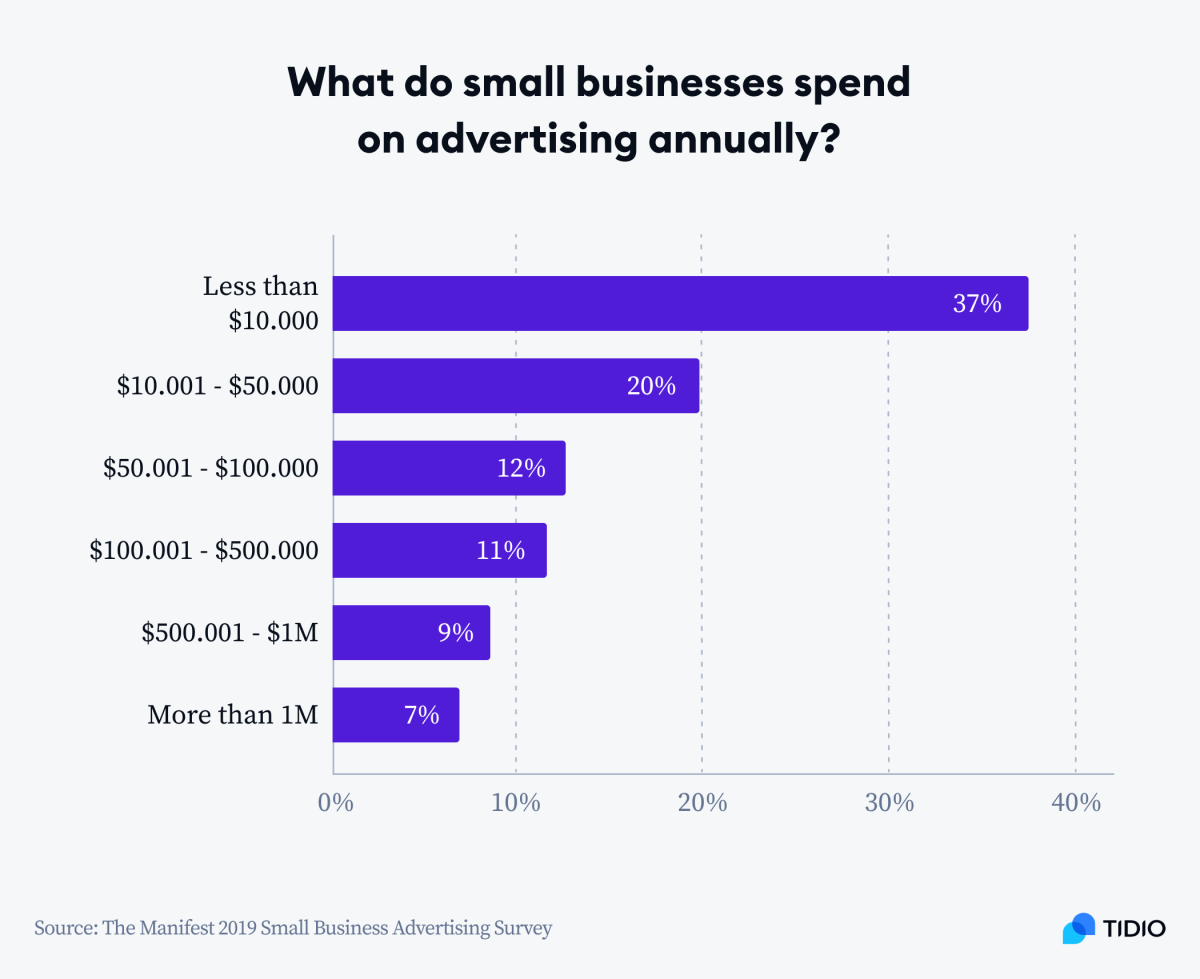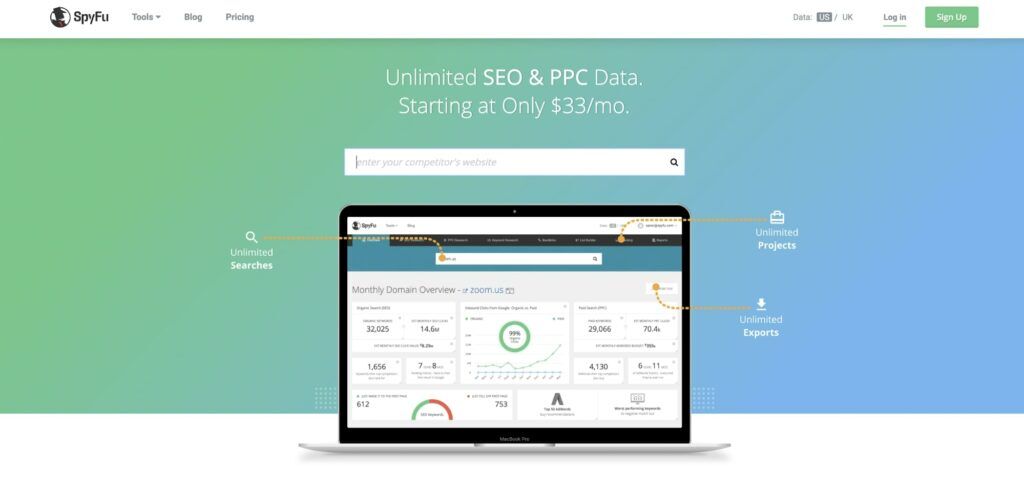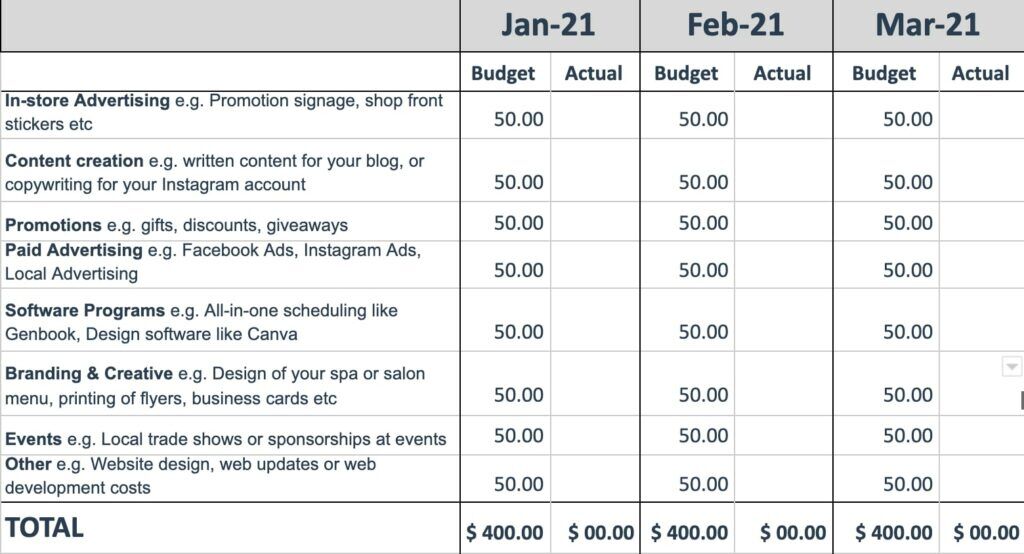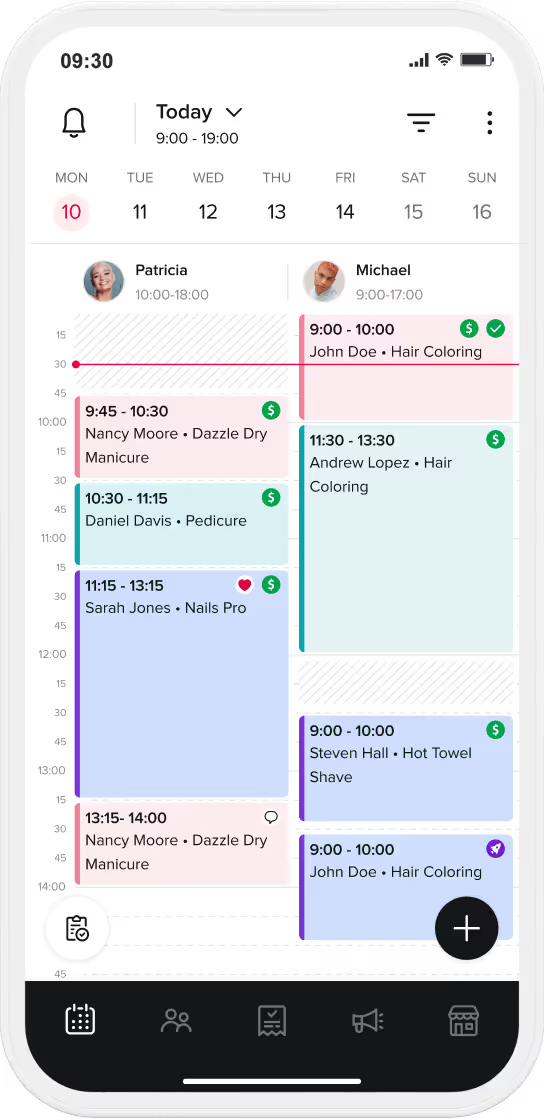

Marketing is — and will always be — an essential component of running your salon, spa, or barbershop.
Why?
Simple: It’s a key driver of sales.
Marketing initiatives can do everything from increasing brand awareness to engaging existing clients and driving repeat business. They pave the way for sales, which leads to higher revenues and profits.
This is why it’s important to invest in marketing — even when times are tough. In fact, many business experts recommend not cutting your marketing budget during a business downturn, especially after this pandemic, and here’s why:
According to HBR:
This is a time not to stop spending money but a time to change how you spend it. It is also an opportunity because firms who are willing to be what customers need in a recession get to keep many of the new customers they get — and cement the loyalty of those they already had.
As the Harvard Business Review points out, marketing in a recession can present businesses with unique opportunities to put their messages out there and gain new and loyal customers.
Suffice it to say that continuing to spend money on marketing is a must, but you need to do it wisely.
This is where your marketing budget comes in.
When implemented correctly, a marketing budget sheds light on the financials behind your marketing initiatives, enabling you to better allocate your funds.
This post will shed light on the steps and best practices you should implement when coming up with a marketing budget for your spa, salon, or barbershop.
Check them out below.
A marketing budget is the estimation of the amount of resources dedicated to your marketing activities. Like most budgets, your marketing budget primarily estimates the amount of money that you’ll spend, though you can also budget for time and gauge how many hours or days should be allocated to marketing-related tasks.
A marketing budget planner is a document that outlines your budget. Every budget looks different, but it typically contains:
Some marketing budget planners may even have graphs so you can visualize the data and easily track your spending.
Now for the nitty-gritty. How exactly do you come up with a marketing budget?
There are a series of steps you can take to figure out how much to spend and where to spend your money.
Here are our recommendations.
Determine your marketing objectives
Start with identifying what you want your efforts to achieve. What are your marketing priorities? Be specific. Ultimately the goal of any marketing activity is to drive revenue, but you need to drill down on the exact ways that you intend to generate bookings and sales.
Let’s say you’re a hairdresser looking to figure out a marketing budget for a small beauty salon. Are you looking to get new clients from a certain age group or demographic? Is your main priority to re-engage clients who haven’t booked an appointment in 6 months? Is it a campaign to ensure that you have enough clients during dry spells? Do you want to increase buzz around a new service or hair product line?
Each of these scenarios will require different strategies and tactics, so your budget for salon marketing will look different for every item.
As such, you need to clarify your objectives and ask yourself what success looks like before you calculate how much your marketing budget should be and where to spend your money.
Research the market
The best way to determine where and how to allocate a barbershop, salon, or day spa marketing budget is to know the types of campaigns to implement and the channels that will help you connect with your audience.
To do that, you need to do a bit of market research and understand how to best reach potential clients.
Consider the following.
Your audience
Your audience
Understand the clients that you want to reach. Which apps, websites, and communities do they frequent? What types of messages appeal most to them? What issues do they have that you can solve?
Answering these questions will help you determine the best approach to take with your marketing initiatives.
If your clients are busy middle-aged moms, for example, then consider establishing a presence in mom communities or using Instagram to market your services.
On the other hand, if you’re after Gen Z clients, then it may be better to set your sights on apps like TikTok or establish a presence in youth communities, schools, etc.
Marketing channels or platforms
Next up, determine the channels or platforms on which you would promote your business. There are a number of apps, websites, and activities you can turn to, and it’s important to evaluate each one.
Here are some promotional activities and channels to consider.
Search
Social media
Media/influencers
Community event sponsorship
Go through the items above (and add anything you can think of) and ask yourself two things:
Let’s say you’d like more people to find you on Google. If this is your objective, you need to figure out how much it costs to run Google Ads or if you need to spend money on Local SEO.
Or maybe you’re more of a video person and would like to establish a presence on YouTube and TikTok. If this is the case, then you’ll need to budget for video production (equipment, time, video editing software) and decide how much to spend on promotions (if you’re planning to run ads). If you're limited on budget then you can find alternatives for video editing software like CapCut which can be used on mobile or with their new addition, on desktop which makes it easier to navigate.
Your competitors
For good measure, look at what your competitors are doing. Keep an eye out for the ads (Facebook ads, or other types) that they’re running and the marketing initiatives that they have in place. This will enable you to identify gaps in your own marketing strategy, so you can beef up your efforts even more.
Run the numbers
Once you have an idea of what marketing activities to get into, the next step is to run the numbers in your business to determine how much to budget for marketing.
According to TIDIO , businesses typically allocate less than 2% of their budget to marketing efforts. When it comes to advertising, a good rule is to spend about 7% of your gross revenue on ads. But most new business owners spend only a fraction of that.

Do note that the 2% to 7% range is a general guideline and the actual percentage you spend depends on a lot of factors, including the type of business you have and how competitive your market is.
For instance, if you’ve just established a new spa and you’re still in the “pre-revenue” phase, then the SBA’s guidelines won’t apply to your day spa marketing budget. And if you’re in a highly competitive area — perhaps you operate in a large and hip city, then you may need to spend more than 7% on marketing.
Another factor to consider is the amount of money you can actually spend.
If you have a lot of business obligations (a large team, debt, etc.) then you may not be able to set aside 2% to 7% on marketing. If this is the case, come up with a dollar amount of how much you can spend, then go from there.
On the flip side, if you’re highly profitable and think that investing even more in marketing will fuel your growth, you can choose to spend above and beyond 7%.
It may also help to look at what similar businesses are doing. If you belong to any industry groups, ask your fellow entrepreneurs how much they spend on marketing.
If you’re digitally-savvy and plan to run PPC ads, tools like SEMRush and SpyFu have features that can help you see which keywords your competitors are bidding on and how much they’re spending. Here’s a brief review of SEMRush

The bottom line? Your marketing budget largely depends on your revenue, market, and the current state of your business.
Analyze these factors carefully until you arrive at a reasonable figure to spend on your marketing.
Already know how much you can spend? Great! Now it’s time to funnel your resources towards those channels and platforms we discussed above.
Essentially, you need to take that figure you came up with and break it down into chunks that can be allocated towards different marketing channels, platforms, and activities.
At this stage, it’s important that you’ve already established:
Let’s say you’re a day spa and you want to reach busy middle-aged moms. You already know that these clients spend time on Google, Instagram, and Facebook. You also know that these clients are craving for a luxurious spa day, so you decide to create a large poster for your store, along with flyers and other collateral.
When allocating your budget, you need to itemize these components and place a dollar amount beside each item. You should also determine a time frame for when every marketing activity takes place and how much you’ll spend in a given period (e.g, monthly, quarterly, yearly).
Here’s a look at what your budget might look like. The example below shows a quarterly budget broken down by month.

As you can see, the marketing activities are listed in different rows, and beside them are the amounts dedicated to each activity. Notice that there’s a column called “Budget” which is the amount you intend to spend; beside it is a column called “Actual” which is the amount that you actually spent.
It’s important to track these two amounts alongside each other. These numbers will tell you if you’re on track with your budget or if you need to make adjustments.
This brings us to our next point…
Track your spending
Creating a budget is great, but an equally important step is to monitor it. Tracking your activities and spending will enable you to determine if you’re on the right path, so you can conserve or re-allocate your resources if necessary.
You don’t always have to stick to your budget, by the way. Your marketing budget planner is just that — a plan. It should be a living document that you can change depending on the circumstances.
For example, you may have planned to spend $100 a month on Facebook ads, but after month 2 you’ve seen zero results. In this instance, it makes sense to adjust your budget and redirect your funds to other activities.
Determine your ROI
Is your marketing budget working for you? The best way to figure this out is to calculate your return on investment (ROI). Track the sales you’ve generated from each marketing activity, then compare it with the amount that you actually shelled out. Ideally, the amount that you earn is greater than how much you spend.
Calculating your ROI can be fairly simple for things like digital ads where you can track the amount you spent versus the number of bookings and sales you made.
However, measuring ROI can be tricky for marketing activities that don’t immediately deliver quantifiable results.
Let’s say you’ve hired a PR professional who helps you land placements on publications. Those mentions in the media may not boost sales right away, but they can increase brand awareness, which may lead to clients down the line.
For these types of marketing activities, you may need to set a longer time frame and find metrics (other than revenue) to measure ROI.
Tracking your budget and ROI will give you tremendous marketing insights. Use that knowledge when setting your budget for the future. By knowing what’s working and what isn’t, you can determine the right marketing campaigns, channels, and platforms and effectively calculate the budget allocations required to bring your plans to life.
Ready to track your stats & reports to better manage your finances, Booksy has the right solution for you.

